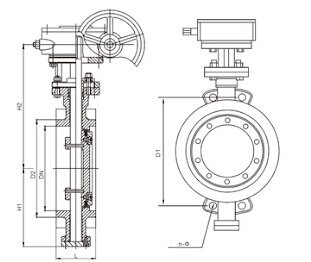Sealing Face Maintenance for Metal Seated Butterfly Valves
As the industrial sector evolves, metal seated butterfly valves remain pivotal in fluid control systems, ensuring safe operations of pipeline systems with their excellent sealing performance and reliability. However, wear and damage to sealing faces over time pose significant challenges. This article discusses maintenance and replacement measures to address these issues and maintain the stable operation of metal seated butterfly valves.

Measures for Sealing Face Damages
Maintenance and replacement measures for sealing faces are vital for ensuring the continued functionality and reliability of metal seated butterfly valves. This section will outline essential strategies to address wear and damage, safeguarding the effectiveness of these critical components.
- Wear Repair: Even minor wear on sealing faces demands attention. Specialized techniques, such as metal powder spraying, welding, or buildup welding, are employed to fill and rejuvenate worn areas, followed by meticulous fine grinding to restore a seamless interface and bolster sealing performance.
- Sealing Face Replacement: In cases of severe wear or irreparable damage, replacement becomes imperative. This intricate process entails disassembling the valve to sequentially swap out compromised sealing faces, ensuring precise integration with the valve base to uphold effective sealing integrity.
Key Considerations
Before starting maintenance or replacement work, it's important to think about certain key factors. These help ensure that what you do is effective and meets goals for efficiency and reliability. By looking at these aspects carefully, operators can set a strong base for successful maintenance and replacement tasks.
1. Regular Inspection: Periodic scrutiny of sealing faces is paramount, enabling early detection of wear or damage. The frequency of inspections should be tailored to suit the valve's operational usage and the nature of the conveyed fluid.
2. Routine Maintenance: Regular upkeep, including cleaning and lubrication, extends sealing face lifespan during normal operations.
3. Appropriate Techniques: Employing proper techniques and equipment for maintenance and replacement ensures accuracy and quality. Refer to the manufacturer's guidelines or seek technical assistance when needed.
2. Routine Maintenance: Regular upkeep, including cleaning and lubrication, extends sealing face lifespan during normal operations.
3. Appropriate Techniques: Employing proper techniques and equipment for maintenance and replacement ensures accuracy and quality. Refer to the manufacturer's guidelines or seek technical assistance when needed.
In conclusion, maintaining and replacing sealing faces is crucial for the long-term stability of metal seated butterfly valves. Regular inspection, routine maintenance, and proper repairs optimize sealing face lifespan, enhancing reliability. Adherence to manufacturer guidelines and technical assistance uphold operational safety. Thus, maintaining metal seated butterfly valves safeguards fluid pipeline systems in dynamic industrial environments.

